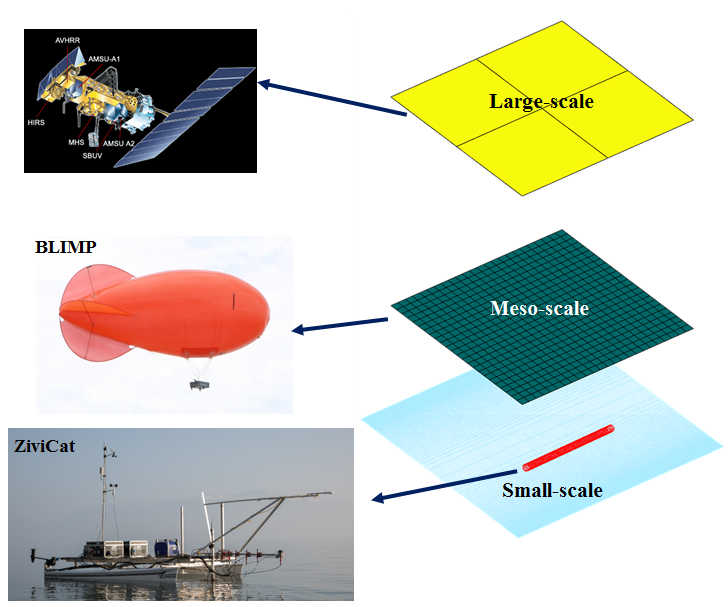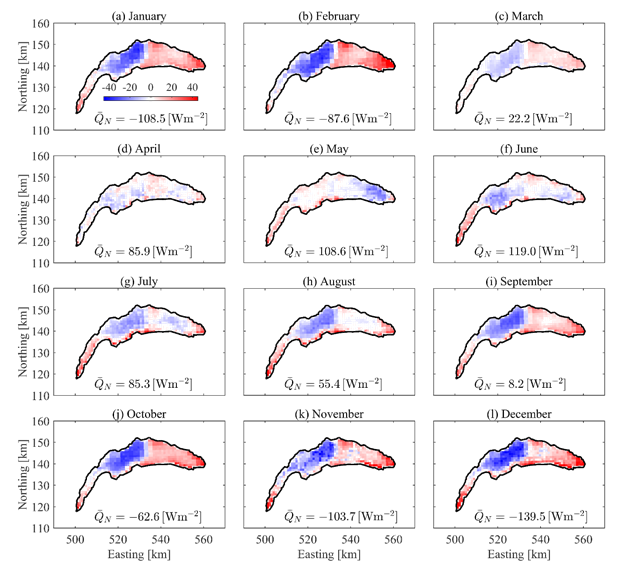We are quantifying the spatio-temporal variability of lake surface water temperature (LSWT) and air-water exchange processes, in particular the surface heat flux, from large-scale (satellite-scale) to meso-scale (sub-pixel satellite scale), to small-scale (in situ measurements).
Available data include AVHRR satellite imagery (University of Bern) and weather model results (COSMO, MeteoSuisse). For fine-scale aerial measurements, we use our in-house Balloon Launched Imaging and Monitoring Platform (BLIMP) and for in situ measurements, ZiviCat (an autonomous catamaran).

AVHRR satellite data and COSMO results enable the assessment of the spatio-temporal variability of heat exchange at the air-water interface of Lake Geneva. A set of bulk algorithms, optimized and calibrated previously at two locations in the lake is used (more details here).
Contact: Abolfazl Rahaghi, Postdoctoral researcher
Multi-annual surface heat flux variability over Lake Geneva at large-scales
 |
Mean monthly net SurHF anomaly patterns of Lake Geneva averaged over the period 2008-2014, with the lake-wide mean values on each map, as shown.
The results emphasize that spatial variability in the meteorological and LSWT patterns, and thus, the spatio-temporal surface heat flux variability, can be significant over a large lake and should be considered when assessing the time evolution of the heat budget. We are also interested in investigating the dynamics of atmospheric boundary layer and lake surface layer interaction, which may explain the obtained spatio-temporal variability. |